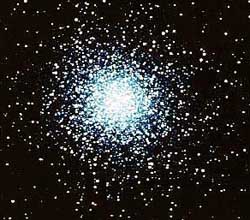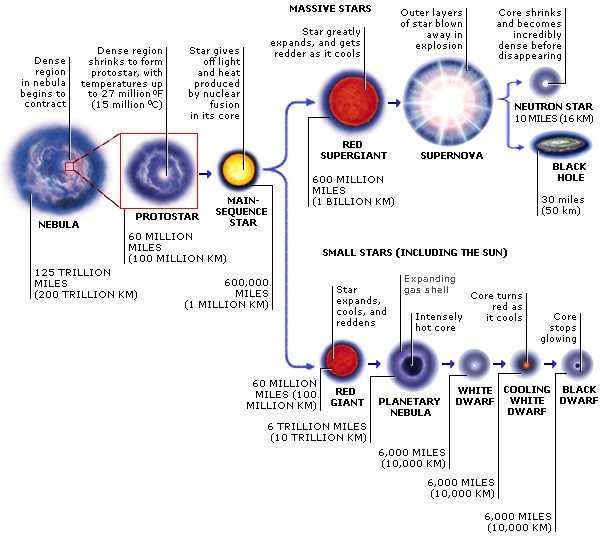DK Space: Stars
Great globes of intensely hot gas called stars pour light and heat into space. A star is born in a vast NEBULA of gas and dust and may shine steadily for billions of years. All the stars except the Sun lie so far away that their light takes years to reach us.
Stars can be very different from each other—in color, brightness, temperature, size, and mass. For example, hot blue-white stars can reach 54,000°F (30,000°C) at their surface, ten times hotter than the coolest stars. A supergiant star can be 600 million miles (1 billion km) across, but a neutron star is only the size of a city.
Energy is produced in a star’s center, or core, where pressures are enormous and temperatures reach 27 million°F (15 million°C). This causes nuclear fusion—atoms of hydrogen are ripped apart and fuse (join) to form helium. These reactions release vast amounts of energy, which makes the star shine.
Since 1995, astronomers have found many planets circling other stars. These extrasolar planets are too far away to see, but we can detect them because their gravity pulls at the stars, making them wobble.
Astronomers measure star brightness in magnitudes. The lower the magnitude, the brighter the star. Most stars we can see with our eyes are magnitude 1–6, but the faintest stars visible with telescopes are magnitude 22. Exceptionally bright stars have negative magnitudes, such as –1.44 for Sirius.
A star is born when a dense region of a nebula collapses under its own gravity. It shrinks into a denser, hotter ball, called a protostar. When the protostar gets hot enough, nuclear fusion begins inside it, and it starts to shine as a new star. After billions of years, the star runs out of fuel and starts to die, expanding hugely and becoming cooler and redder. Small dying stars swell into red giants, and massive dying stars swell into supergiants. A red giant blows out its outer layers to become a planetary nebula and finally becomes a dense dwarf star. A supergiant explodes as a supernova. It may end up as a neutron star or a BLACK HOLE.
A nebula is a huge cloud of gas and dust found in the space between the stars. Some nebulas glow. Others are dark—we can see them only when they are silhouetted against stars or bright clouds. New stars are born inside dark nebulas.
Nebulas contain all the ingredients needed to form stars and planets, including atoms of hydrogen, oxygen, and nitrogen, and graphite, a form of carbon. They also contain water and many other molecules.
A black hole is a region of space with such strong gravity that it swallows up everything that comes near it, even light. A black hole may form when a very massive star blasts itself apart as a supernova. The core of the star collapses so violently that all its matter is crushed into almost no space at all, leaving behind a region of intense gravity—a black hole.
Ordinary black holes are formed when massive stars die, and they typically have the mass of about 5–10 Suns. A supermassive black hole, however, has a mass millions of times greater, and is formed when huge gas clouds collapse. Supermassive black holes seem to be the power source of high-energy active galaxies, such as quasars. Astronomers believe that a supermassive black hole lurks at the center of our own galaxy.


